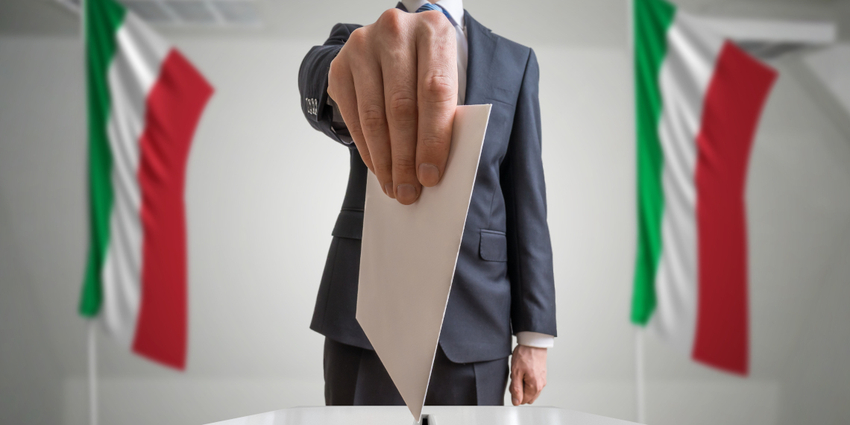Following a week of confusion and wrangling in Rome over the next Italian president, the good news is that the chosen one is nothing less than the best one could expect: Sergio Mattarella, the man who has done more than anybody to guarantee stability and wisdom to Italian politics over the last seven years. His continuing presence in the Quirinale palace is the best premise that the same conditions will prevail for another seven years. But there is more: the same premise ensures that Mario Draghi’s position as prime minister will not be questioned, at least until the next general election due in June next year. Unfortunately the good news end here, and trouble begins.
The contorted maneuvering of political parties that led to this outcome is the worse seen in the history of Italian politics – which is saying a lot. Presidential election requires, after three initial polls, a simple majority in the combined chambers (951 in total), plus 58 regional representatives: 505 votes out of 1009 members. No party coalition had such majority: neither the Center Left (some 426 votes) nor the Centre Right (414). The other unaffiliated members (111) and the regional members are largely uncontrollable and unpredictable.
Political scars due to a climate of feud and reciprocal spite
Arithmetic and common sense would have required the party leaders to lock themselves in a room, stop all communication with the press, come up with a name with bipartisal support, go back to the hall and vote that name. Nothing of that happened. The week passed with the party leaders – especially the self-appointed one of the Centre Right, the head of the League Matteo Salvini – publicly throwing names promptly rejected by others, while the delegates in the hall submitted white ballots or unlikely names including comedians, musicians and the like. Respected personalities, including Mario Draghi, ended up sharing that company in the mediatic meatgrinder.
Incapable of a solution, the leaders eventually climbed the Quirinale, where Mattarella was overlooking the move of his personal items to an apartment he had already rented, to beg him to accept another mandate. The man obliged, in spite of what he referred to as “other personal plans”.
The political scars this leaves behind, the loss of credibility of the electoral system, and the present climate of feud and reciprocal spite can hardly be overestimated. The Italian bipartisan system, inaugurated in 1993 with the introduction of a majority electoral premium, lies in rubble. What will replace it?
The need of measures, plans, and reforms is urgent
Even before this question is answered, urgent matters require government attention. The economic and social conditions of the country as it exits the Corona pandemic necessitate a steady policymaker’s hand. The question is: Even with heavyweights like Mattarella and Draghi at the helm, can the challenges be met when the very parties which featured such dismal performance provide the essential support to the government?
Here is a quick list of policy urgencies:
- Covid emergency: The pandemic retreat may be in sight, but careful management is still needed. Phasing out of the emergency measures has to be planned and implemented. Not only in the health sector: the economic measures (guarantees, subsidies) have to be prudently lifted, resisting pressure for continuing support from lobbies and economic sectors.
- Budget and fiscal reform: The government has committed, internally and in Europe, to overhaul the public budget, reducing taxes, eliminating waste and increasing productive investment. All this must coexist with a credible public debt reduction plan. By April budget plans for 2022 and beyond must be completed and presented in Europe.
- Justice reform: Trial procedures must be overhauled to increase efficiency and speed; a key reform in a country that has by far the longest trial duration in the whole EU. The parliament has authorized the government to act by decree, but there is still plenty of scope for the parties to backpedal or water down the reform.
- National Recovery and Resilience Plan (“Piano Nazionale di Ripresa e Resilienza”, PNRR): Approval of the plan by the EU is a condition to receive the annexed funding. Some 100 conditions must be met in 2022 alone, pertaining not to the planning phase (the easy part), like last year, but to implementation (the difficult one). Blocking or delaying the inflow of EU funds is a concrete risk.
- Pension reform: The pre-existing unsustainable law, which allowed retirement at 62 years of age, has been repealed by Draghi and replaced by a transitory arrangement (64 years) due to expire this year-end. New permanent arrangements must now be introduced linking retirement to life-expectancy, with penalties for early retirement to ensure financial sustainability.
Each item of this incomplete list would procure cold feet to any government in a pre-electoral year. Their combination is daunting. Mario Draghi can count on the support of the highest authority on the highest hill of Rome. He has already given ample demonstration in the past of his ability to navigate rough seas and to succeed in difficult circumstances.
May all of us be able to say, one day, paraphrasing one of the greatest politicians of all time: “That was his finest hour”.
Ignazio Angeloni is SAFE Senior Fellow and Research Fellow at Mossavar-Rahmani Center for Business and Government, Harvard Kennedy School.
This article was originally published by the Official Monetary and Financial Institutions Forum (OMFIF).
Blog entries represent the authors’ personal opinion and do not necessarily reflect the views of the Leibniz Institute for Financial Research SAFE or its staff.


